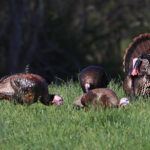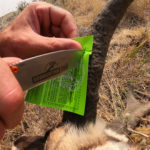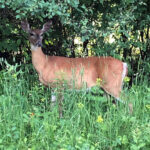LAST UPDATED: November 30th, 2022
Nothing lifts your spirits like getting daytime trail camera photos of the number one buck on your hit list. I’m not talking one or two photos, either. This deer was positively photogenic. In fact, he always has been. For three years now, I’ve had my sights set on this beautiful mountain buck, which started out as a 9-point, grew into an 11-point, and had now fully matured into an impressive 12-point.
Despite that, though, I promised myself back in August that I wouldn’t get too wrapped up in hunting for one specific buck. This was public land, first and foremost, and as I soon discovered as the season began, I wasn’t the only one who knew about this deer. And second, it was Big Woods mountain country, where whitetail populations are sparse, food sources are spread out, and deer are about as unpredictable as they come.
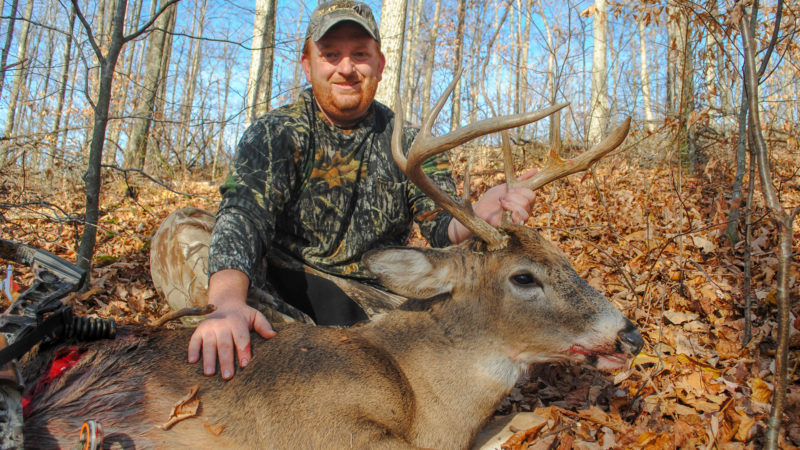
But I couldn’t stop thinking about this buck. I’d lie awake at night before the season, wondering how it would happen when I finally had the opportunity to harvest this magnificent animal. Would I maintain composure and make the shot, or break down like a quivering idiot and blow the chance?
Well, so much for promises. Only so many times in life do you get the opportunity to hunt for a buck of that caliber in your favorite piece of forest. To use a baseball analogy, I decided to swing for the fences.
Below is a series of “failures” I’ve experienced while hunting this buck so far this year. They are the failures that result in unfilled buck tags as the late season comes on, and the end of the season draws near.
Failure to Think Beyond the Trail Cam
Trail cam photos are great, but don’t let them dupe your hunt.
The first failure should’ve been the easiest one to predict: just because you have a buck regularly on your trail cameras doesn’t mean you’re going to kill him.
Whitetails experience numerous changes throughout the year, and many of those changes occur during the summer to fall transition. A buck in October is a completely different animal than he was in even early September. As soon as he shed his velvet, the 12-point started showing up more often at night, and the photos became more sporadic. I’d get him on camera for two or three days in a row, and then nothing for a week. But each time I had him on camera, it was in a different location than the time before. In other words, he rarely returned to a specific location. It was like trying to predict a pinball machine.
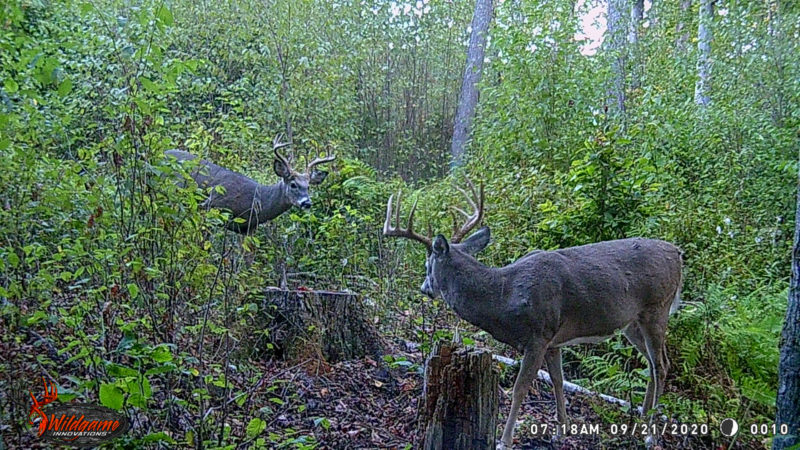
This was further complicated by the fact that I live three and a half hours from camp and where I was hunting. I was still able to hunt three-day weekends every week of the season, but any intel gathered from my cameras was outdated by the time I got around to checking them. I was always one step behind.
Failure to Change Stand Locations
Hunting the same stand over and over again without seeing results is insanity. Don’t do it!
Second day of archery season, I saw two deer, a mature doe and a button buck. Third day, a nice 8-point came within range but got a pass. All summer, the doe, button buck, and 8-point usually showed up on my cameras around the same time the 12-point did, which gave me hope that the big boy was nearby.
Looking back, those early deer sightings were a curse because they gave me false confidence in an iffy stand. I spent the first two weekends of the season in that stand, despite knowing that food sources were changing, and deer movements were changing, too. I spent the next seven hunts (four evenings and three mornings) in that stand waiting for magic to happen but it never did. I didn’t see a single deer on any of those hunts.
I failed in that I didn’t adjust to what was happening around me. I got stubborn and stuck to that stand even though I knew the food sources had shifted and deer were no longer in their late summer patterns.
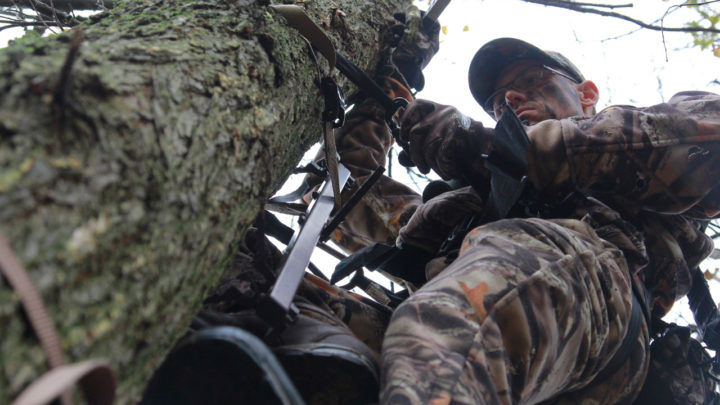
Failure to Adapt
Failure to adapt to varying conditions of the deer you pursue, as well as the land they live, will result in unpunched tags in your pocket.
The weather can certainly play a role in failure. This year, it wasn’t the main cause, but it was certainly a contributor. Every weekend brought warm, sunny, blue skies. The first three weekends I hunted were tee-shirt weather. Meanwhile, through the week typically brought a drop in temperatures. And more daytime photos of the 12-point moving around and through the cut where I believed him to bed.
We can control a lot of things while hunting, but weather isn’t one of them. However, where I think I failed here was continuing to hunt around the bedding area instead of waiting for more favorable conditions. My reasoning was based on outside competition. More vehicles were starting to show up in the access area, and I was also getting more photos of hunters passing by my trail cameras. In fact, I walked in to hunt one evening and there was a guy in a tree saddle less than 20 yards from my hang-on stand. First come, first serve on public land, and my competitive spirit kicked it. Rather than devise a new plan, I plunged right in and doubled down on my efforts.
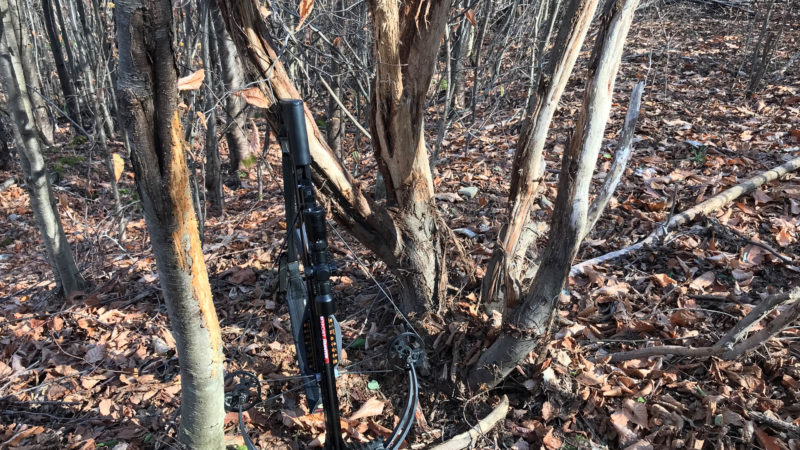
Bucks don’t get old on public land by being stupid. How many times have we heard that? Well, it bears repeating, and the more I pursue mature whitetails on public land, the more I realize that to be successful, you have to do something different. You can’t hunt a spot just because that’s where everyone else is hunting. You can’t scout the same way, access the area the same way, or place your stands in similar locations.
Public land bucks survive because they do what’s unpredictable. The oldest, biggest ones don’t act like other bucks, and when hunting pressure increases, they know what to do, and it’s rarely what you’d expect them to do. As more hunters started invading the area the 12-point called home, the buck began showing up less and less on my cameras. The last photo I have of the deer was taken October 29th.
Failure to Beat the Wind
The wind is either your friend, or enemy. Know which side you’re on.
Hunting pressure was picking up and I felt like it was a matter of time until someone arrowed the 12-point, so I jumped the gun and made a move that I wasn’t planning to make quite yet. I walked the length of the cut and set up off the end of the point where it dropped down into a little hollow. Sure enough, right before dark, deer started filtering out of the cut across the hollow, where I believed the big buck to be bedded.
It was the first week of November and I grunted in the direction of the deer I could hear rustling the leaves but couldn’t actually see. Immediately, a deer came into view, but I couldn’t get a clear look at him through the saplings. All I knew was that he was huge.
He started my way, but paused to make a scrape in an attempt to assert his dominance. And then he stood there for what seemed like forever. Mature bucks have always amazed me with their patience, and this one had it in spades. He stood there as time ticked away, and every few seconds it seemed as if the sky got a shade darker. Finally, when there was still barely enough shooting light, the buck began circling downwind. The most frustrating part was not being able to get a clear look at him, but I knew it was the 12-point.
Well, you can guess what happened. Fifty yards directly downwind, the buck got my scent and snorted. He scampered off deeper into the hollow and out of hearing range.
One of the reasons this buck has been so hard to hunt is because he prefers to bed on the lower third of an isolated hillside, and in very thick cover. When hunting mountain country, the safe advice is to hunt high, on the ridges, where the wind is most consistent. The farther downhill you go, the more the wind will swirl. You’re beat before you even get started.
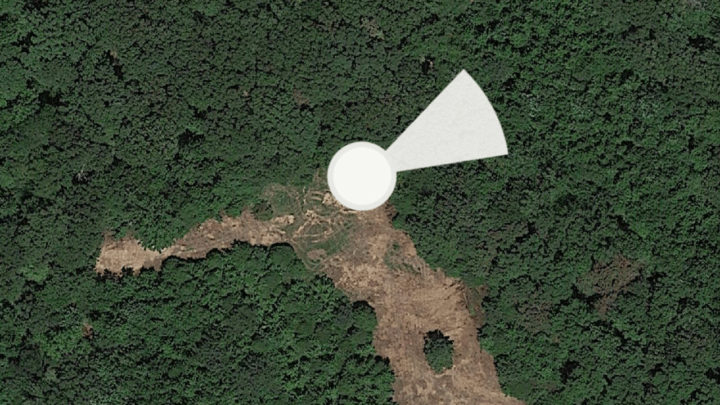
Success #1
After two weeks, with no more trail camera photos and no signs of the 12-point – while continuing to encounter other hunters pressuring the area – I decided to take a hike along an overgrown logging road through a 12-year-old cut. I’d had a trail camera not far from there back in early October and had gotten a photo of several nice bucks. When those bucks started showing up on cameras where the 12-point had been previously photographed, it got my mind churning. If those bucks could end up there, then it was very possible the 12-point could end up where those bucks had been. The two locations were about a mile and a half apart as the crow flies.
I found the first massive rub about 200 yards into the cut. The second massive rub was another 200 yards beyond that. Both rubs were so fresh that they smelled like the buck that made them. And I knew of only one buck on the mountain big enough to make rubs of that caliber.
I set up on a nice little crossing about halfway between the rubs for the last day that I was able to hunt during the early archery season, but the weather didn’t cooperate. It was warm and calm. I pushed out several deer while walking in that morning, and had another snort at me that evening as I headed out in the dark.
Before leaving, though, I put up a couple trail cameras along the old logging road. There’s no telling for sure if the 12-point made those rubs. I guess time will tell. But I do know one thing for certain. Even if it’s not the 12-point making those rubs, I’ve at least located the hiding spot of another mature mountain monarch. That’s a success in my book, and a reason to get excited about the late season.
Even after all the years I’ve spent deer hunting, I’m still learning from my failures. Best of luck to you as you do the same.

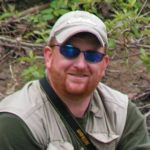 By
By 